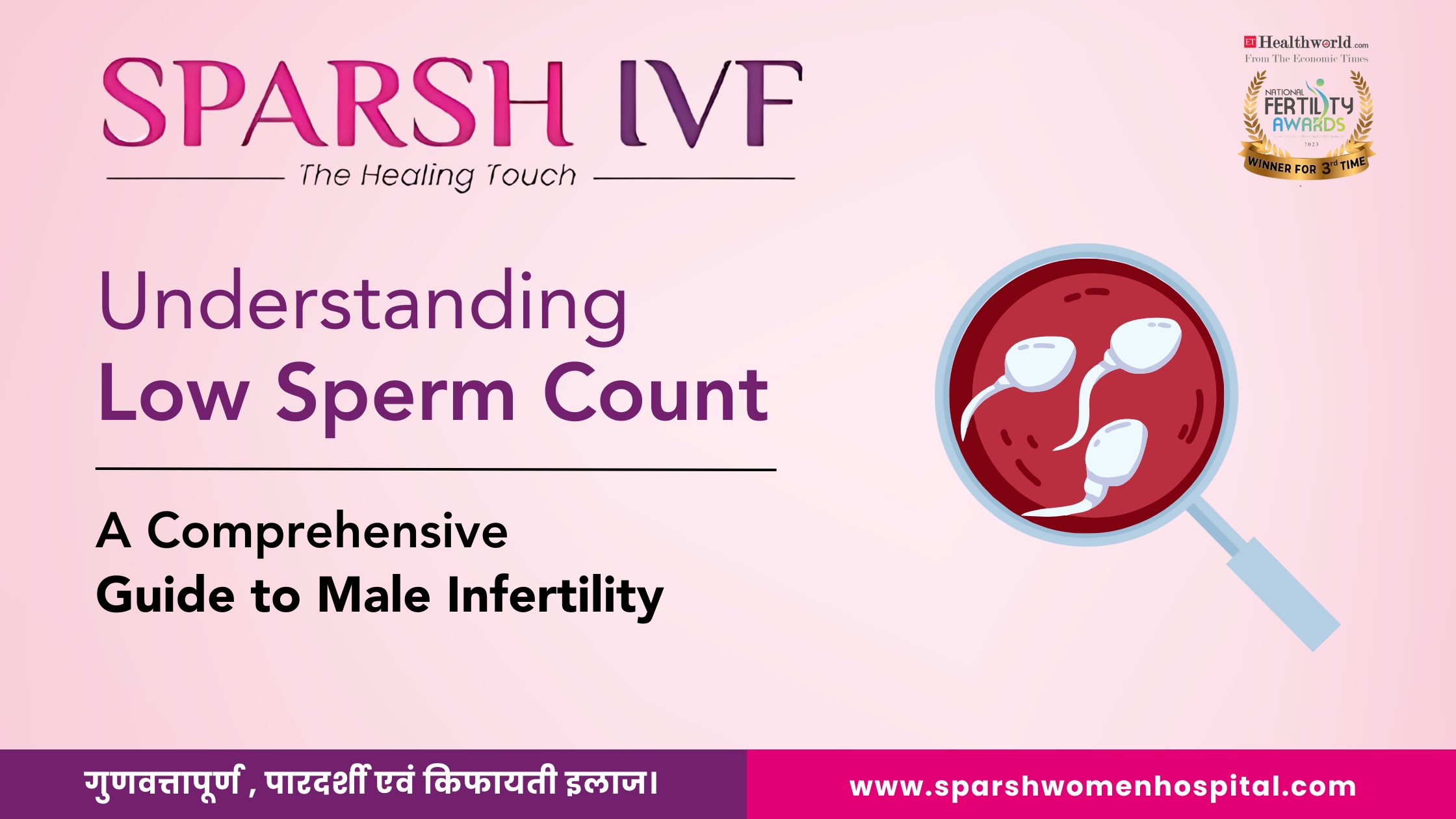
Understanding Low Sperm Count : Comprehensive guide to male infertility
Low sperm count, medically termed oligospermia, is a prevalent concern contributing to male infertility. Worldwide, infertility affects approximately 15% of couples, with low sperm count being a significant factor in nearly half of these cases. The condition arises when the semen ejaculated during orgasm contains fewer sperm cells than normal. A healthy sperm count typically falls between 15 million and over 200 million sperm per milliliter of semen. If this number drops below 15 million per milliliter, it is classified as low sperm count and can complicate the natural process of conception. In extreme instances, there may be no sperm at all, a condition referred to as azoospermia.
Signs and Symptoms of Low Sperm Count
One of the biggest challenges in diagnosing low sperm count is the lack of obvious symptoms in many cases. The most evident sign is the difficulty in conceiving a child after a year or more of regular, unprotected intercourse. However, other signs and symptoms of low sperm count may signal a deeper issue:
-
Reduced Sexual Desire: A drop in libido may be an indirect sign of low sperm count due to hormonal imbalances, particularly low testosterone levels.
-
Erectile Dysfunction: Difficulty achieving or maintaining an erection may be related to the same hormonal issues that affect sperm production. Erectile dysfunction, combined with low sperm count symptoms, can further decrease fertility.
-
Testicular Pain or Swelling: Discomfort or swelling in the testicles can be a symptom of low sperm count and may indicate underlying conditions such as a varicocele (enlarged veins in the scrotum).
-
Changes in Semen Appearance: Changes in semen color, consistency, or volume might not directly correlate with sperm count, but they can point to an issue affecting reproductive health.
What Causes Low Sperm Count?
Various factors can contribute to low sperm count, ranging from lifestyle choices to medical conditions and environmental influences. Understanding these can help both in prevention and treatment.
Lifestyle Factors
-
Smoking: The harmful chemicals in tobacco damage sperm DNA, leading to poor sperm quality and reduced sperm production. This is one of the leading causes of low sperm count.
-
Alcohol Consumption: Excessive alcohol intake can lower testosterone levels and affect sperm morphology, making it harder for sperm to fertilize an egg.
-
Obesity: Excess body fat disrupts hormone balance, particularly testosterone, leading to signs of low sperm count in men.
-
Stress: Prolonged stress can elevate cortisol levels, suppressing testosterone and reducing sperm count.
-
Heat Exposure: Activities that raise the temperature of the testes, such as using saunas or wearing tight clothing, can impair sperm production, contributing to low sperm count signs.
Medical Conditions
-
Varicocele: Enlarged veins in the scrotum can raise the temperature in the testicles, reducing sperm quality ,a leading cause of low sperm count.
-
Infections: Infections, particularly sexually transmitted ones, can inflame the reproductive tract, reducing sperm count and motility.
-
Hormonal Imbalances: Disorders affecting the hypothalamus or pituitary gland can disrupt hormone production, leading to symptoms of low sperm count.
-
Genetic Conditions: Some genetic disorders like Klinefelter syndrome or cystic fibrosis may result in signs of low sperm count in men.
-
Cancer Treatments: Chemotherapy, radiation, and even surgeries for conditions like testicular cancer can impair sperm production.
Environmental Factors
-
Toxins and Chemicals: Exposure to pesticides, heavy metals, or industrial chemicals can damage sperm and lead to low sperm count symptoms.
-
Radiation: Radiation exposure, whether from medical treatment or the environment, can damage sperm DNA.
Diagnosis of Low Sperm Count
The process of diagnosing low sperm count involves several steps to determine the underlying causes:
-
Medical History: A thorough review of medical history, including sexual habits and lifestyle factors, is crucial.
-
Physical Examination: A physical exam can reveal abnormalities in the testicles or scrotum.
-
Semen Analysis: A key diagnostic tool is a semen analysis to assess sperm count, motility, and morphology.
-
Hormonal Testing: Hormonal imbalances can be identified through blood tests measuring testosterone and other relevant hormones.
-
Imaging Tests: Scrotal ultrasound may reveal structural issues, such as a varicocele, that could affect sperm count.
-
Genetic Testing: For men with severe oligospermia or azoospermia, genetic testing may uncover genetic causes of low sperm count.
Treatment Options for Low Sperm Count
Treatment for low sperm count varies based on the underlying cause and the severity of the condition.
Lifestyle Changes
-
Quitting Smoking: Smoking cessation can improve sperm quality over time.
-
Reducing Alcohol: Limiting alcohol consumption can restore hormonal balance and improve sperm production.
-
Healthy Weight: Maintaining a healthy weight can optimize hormone levels and sperm quality.
-
Stress Reduction: Techniques like yoga or counseling can lower stress, which positively impacts reproductive health.
-
Heat Management: Avoiding prolonged heat exposure can help maintain optimal testicular temperature.
Medical Treatments
-
Hormonal Therapy: Hormonal imbalances affecting sperm production can be treated with medication.
-
Antibiotics: If an infection is causing low sperm count, antibiotics can help restore fertility.
Surgical Interventions
-
Varicocele Repair: Surgery to correct a varicocele can enhance sperm production and increase fertility.
-
Obstruction Removal: If blockages are present in the reproductive tract, surgery may be required to remove them.
Assisted Reproductive Technologies (ART)
-
In Vitro Fertilization (IVF): IVF allows for fertilization outside the body, even with low sperm count.
-
Intracytoplasmic Sperm Injection (ICSI): ICSI involves injecting a single sperm directly into the egg, making it suitable for men with extremely low sperm counts.
-
Intrauterine Insemination (IUI): In IUI, sperm is placed directly into the uterus during ovulation to improve the chances of fertilization.
Conclusion
Low sperm count is a manageable but complex issue contributing to male infertility. Understanding the signs and symptoms of low sperm count, identifying the causes of low sperm count, and exploring treatment options can help improve fertility outcomes. By making lifestyle changes, seeking medical evaluation, and pursuing appropriate treatments, many men can overcome infertility challenges.
Please contact us for more details : info@sparshwomenhospital.com
Call: +91 7878305787 | +918696634444



Post Your Comment